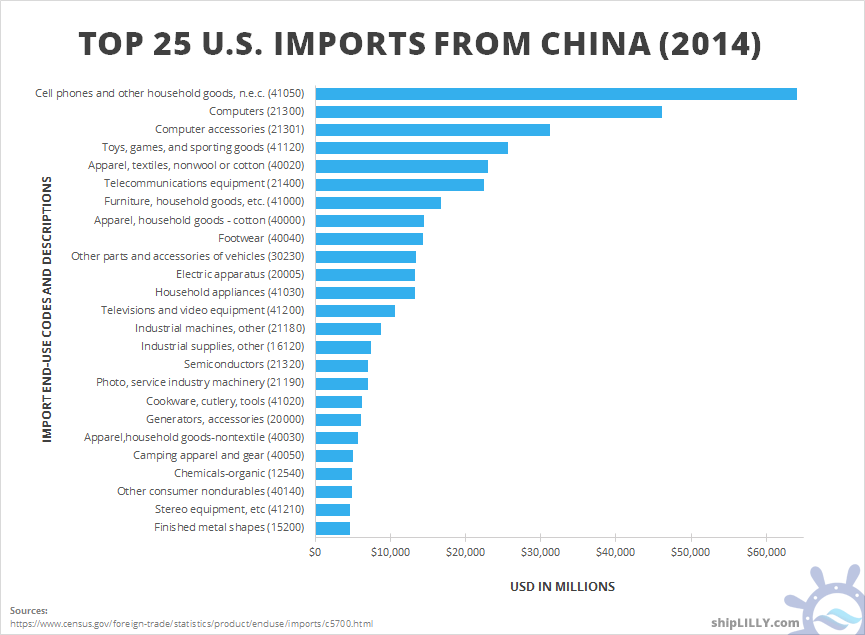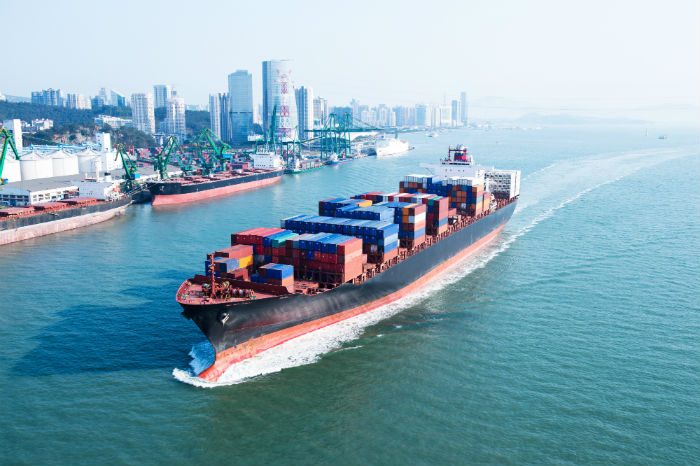It’s not easy to characterize the relationship between the United States and China in such a short space. In fact, entire books have been written about the “hot and cold” relationship between the world’s two biggest super powers.
Although diplomatic relations officially began between the U.S. and the Qing Dynasty in the late 1700s, most people think of the two countries’ partnership (or at times, lack thereof) in the context of the last two decades. As China’s economy has surged, the nation has positioned itself as a key economic player on the world stage – and has inextricably linked itself to U.S. financial well-being as a result.
Physical similarities and philosophical differences
There’s a reason the U.S.-China relationship is such a popular topic of discussion, too. Just a quick look at the facts and figures will make this clear –if it isn’t already!
They have the largest Gross Domestic Products (GDP) in the world – $10.355 trillion and $17.416 trillion for China and the United States, respectively. They are two of the largest countries in the world geographically (over 9.5 square kilometers each), and their biggest cities – Shanghai and New York City – are home to some of the greatest international tourist attractions and architectural marvels.
The two nations haven’t always seen eye-to-eye politically, however. Perhaps the biggest source of tension between the two global powers is their fundamental disagreement over proper governance. While the United States is proud of its legacy as a constitutional democracy and staunchly supports both economic freedom and capitalism, China has made a name for itself as the world’s most successful Socialist, single-party state.
That being said, the Chinese government has loosened its regulations in some sectors over the past decade or so in an attempt to encourage both domestic growth and foreign investment. And above all, both countries have at least been practical in their financial dealings with one another and have lent support in isolated political situations.
Trade facts and figures
Although the trade relationship between the United States and China is somewhat complicated, it’s not too difficult to offer a rather succinct one-sentence summary: the U.S. does the buying, China does the selling. Of course a more detailed assessment would reveal that the United States does in fact export quite a few material goods to China, but those products don’t even make a dent in the amount that China imports to the U.S.
It wasn’t always this way – back in 1990, Canada was actually the United States’ biggest trade partner. But the most recent data from 2014 puts China way ahead of the pack; the nation imported more than $467 billion in products to the U.S. last year, compared to just $347 billion from second-place Canada. Compare this to the reverse route (the U.S. exported approximately $123 billion to China in 2014) and it’s easy to see the striking imbalance in trade.
While people in the U.S. might wish the scales didn’t tip so far to one side, it’s understandable how this discrepancy developed. The United States has existed comfortably as a consumer economy for several decades; as such, its citizens spend less time engaged in manufacturing tasks and more time in technology and service positions that are not as “exportable.”
However, U.S. residents do have a taste for products that require manufacturing (think electronic gadgets, above all), and where can they find these goods? That’s right, China. As a developing nation, China’s industry is still heavily involved in manufacturing, and a larger percentage of its absolutely gargantuan population is engaged in factory work.
A glance into the future (maybe)
That being said, as China transitions to a consumer economy and its citizens become more comfortable in their roles as shoppers rather than blue-collar producers, we may see a shift in the balance of trade over the next few years. In fact, some Chinese companies have even begun outsourcing their manufacturing centers to the United States!
Further evidence of this shift can be seen in measures of Foreign Direct Investment (FDI). Although the U.S. had been ranked #1 for FDI since 2006, China moved into the top position just last year. The fact that so many international businesses see China as an attractive base for financial growth demonstrates the consensus that the nation is quickly transitioning into a “consumer-led” economy.
On the flip side, China has increased its own FDI expenditures, and what is one of its top destinations for overseas spending? You guessed it: the United States.
Persistent problems: deficits and rate fixing
At least for the foreseeable future, the United States will continue to buy from China in volumes that far outpace what it sells. In fact, 19% of U.S. total imports in 2014 came from China, most of which were computer parts, apparel, and household goods. Some have criticized U.S. purchasing from China, especially as the U.S. deficit has ballooned; as of 2013, the U.S. trade deficit with its primary trading partner was $318 billion, and China now holds about 10% ($1.8 trillion) of the U.S. national debt.

The other primary consideration in the trade relationship has been what some call “rate fixing.” The Chinese government maintains tight control over its currency valuation and has a reputation for intentionally undervaluing the renminbi (RMB) in order to make its exports cheaper and more attractive to foreign buyers.
Many have pointed to this “managed float” of Chinese currency as a main reason for the enormous U.S. trade deficit, while others have claimed that it could give China inappropriate financial power over the United States.
The reliability of mutual dependence
Regardless of the actual effect of either nation’s policies, however, it’s unlikely that citizens of either country have serious cause for concern. For example, some fear mongers have cried panic over the possibility that China could call in its debts to the U.S. and destroy the country financially, but the likelihood of this happening is slim. For one, China is highly dependent on the U.S. economy, and it wouldn’t do their government any good to enact such a plan.
Furthermore, damaging the American economy to such a significant extent would spell disaster for global affairs – both financially and politically – which again, would harm the Chinese government more than it would help. In the end, it’s safe to say that while the Chinese-American trade relationship is a rocky road, it won’t hit a dead end any time soon.


